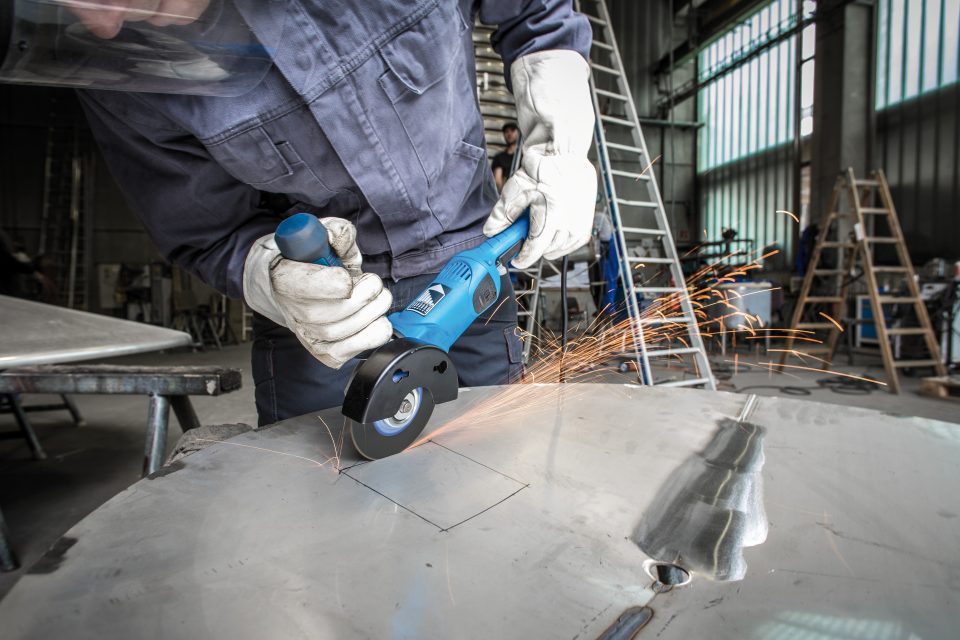Stainless steel (INOX) is often a first choice material to work with because of its corrosion resistance, longevity and cost-effectiveness. Working with INOX, however, does pose some challenges—especially if incorrect tools and processes are used.
As part of their service to customers, PFERD South Africa offers guidance on working with stainless steel and ensure customers benefit from everything this versatile material has to offer.
Marius Steyn, Training Manager at PFERD South Africa explains, “The South African stainless steel and steel industries are well established in the supply of high-quality steel. Stainless steel applications can be found in all of the major industrial sectors, be it food, beverage, pharmaceutical or automotive and it is important to achieve the specified surface conditions and finishing. In order to obtain a high standard, certain tools and in-situ arrangements need to be adhered to for the process to be successful and cost-efficient”.

Establish the Function
Differing surface functions determine the final surface roughness and finish of the stainless steel. Industrial applications, for example, may require a surface definition that prevents bacterial growth to ensure a safe and hygienic environment as well as to maintain corrosion and wear resistance in order to prevent structural damage.
In the retail or architectural sector, aesthetics take precedence and priority is placed on the stainless steel’s final appearance. Therefore, it is important to establish what function the finished stainless steel surface will perform.

Eliminate Cross Contamination
Stainless steel is an alloy of iron with a minimum of 10.5 percent chromium. Chromium produces a thin layer of oxide on the surface of the steel—the “passive” layer—this prevents surface corrosion.
Damage to the passive chromium layer, caused by incorrect working methods can lead to the stainless steel rusting. Cross-contamination of INOX is one form of damage that can cause it to rust.
“The prevention of cross contamination of non-stainless with stainless steel is a crucial factor when working with stainless steel in workshops. PFERD advises customers to protect the work components at hand from surface contamination and contamination from other materials”, Steyn said.
Sparks from close by metal cutting and grinding operations can embed themselves in the stainless steel and lead to its eventual deterioration. This can occur sometime after installation of the stainless steel products and would then require costly repairs in accordance to best practises.
Only specialised grinding and polishing components for stainless steel should be used and all non-stainless consumables should be avoided due to the possibility of contamination.
Steyn added, “The protection of the stainless steel operation goes as far as recommending the establishment of dedicated stainless steel working bays and separate storage facilities for materials and components that are specifically designed for stainless steel operations. A clean environment as well as ensuring the stainless steel itself is clean, by using dedicated cleaning agents, is recommended”.
“Similarly, it is important to select grinding tools without any ferrous, chlorinated or sulphurous fillers. Wire brushes with stainless steel or Silicon Carbide (SiC) filaments are specifically designed to be stainless steel compatible”, said Steyn, adding, “PFERD have conducted enormous research into stainless steel best working practice, which is readily available on our website”.

Factors that play a role in the correct tool selection for stainless steel use include dimensions of the surface and its condition, accessibility, the result required as well as the application method.
Small and tight spaces require different tools compared to surfaces that are more accessible. The cleaning and smoothing of a steel weld seam requires completely different tools to those used for brush matting or finishing of stainless steel.
Achieving a mirror finish is one of the more demanding requests as mechanical scratches should be removed and the surface structured systematically.
Technological advances in grinding and polishing tools for INOX help eliminate many of the material’s challenges. Heat discolouration in the grinding area, which occurs due to stainless steel being a bad conductor of heat, can alter the metal’s metallurgical compound and reduce its corrosion resistance.
To prevent this, PFERD’s POLIFAN CO-FREEZE INOX flap discs which feature ceramic oxide (CO) grain with an active grinding and cooling coating (FREEZE), reduces heat build-up and heat discolouration when grinding stainless steel.
Steyn further adds, “The cutting of stainless steel is optimised with the use of our high-performance thin cut-off wheels. These 1mm wheels cut faster, thereby producing less heat and heat discolouration. Burr formation is also minimised which in turn requires less rework to remove”.
PFERD Tungsten Carbide burrs with INOX cut offer an extremely high stock removal rate thanks to its innovative tooth geometry leading to significantly less heat, heat discolouration and vibration.
“The POLIFAN CO-FREEZE, INOX Cut TC Burrs and Thin Cut-off wheels are but a few of the 8 500 products in our product range”, says Steyn, adding, “Greater understanding of the correct tool selection and application of how they interact with stainless steel is a conversation PFERD welcomes”.
PFERD is available to assess your application and provide you with the optimum product and machine combination to ensure the ideal and most cost-effective solution.
For additional information, or to arrange an on-site product evaluation, please contact PFERD South Africa on:
Tel : +27 11 230 4000
E-mail : info@pferd.co.za / sales@pferd.co.za
Website : www.pferd.com
Ends



